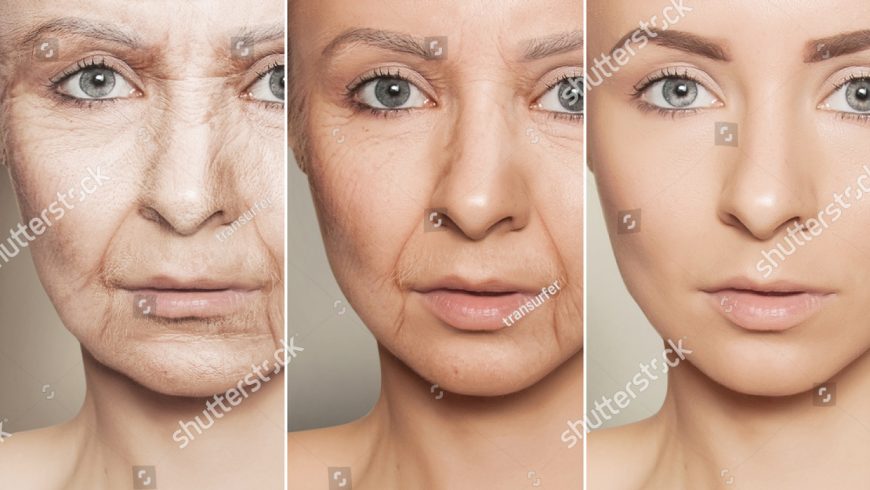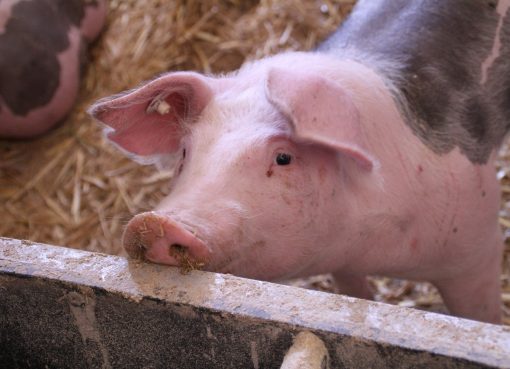The readers might be aware of Yayati, the Puranic king and son of King Nahusha and his wife Ashokasundari, daughter of Lord Shiva and Parvati, who was one of the ancestors of Pandavas. As the story goes, Yayati swapped his old age with his youngest son, Puru and remained young for around thousand years to enjoy all the pleasures of the senses. Although not exactly like Yayati, everyone aspires to remain healthy and youthful all the time in life. But the question still remained unanswered: is it possible to do away with the inevitable curse of ageing – the senile symptoms and die healthy?
If not avoid completely, it is now possible to delay at least some of the many effects of aging. For example, by avoiding unprotected exposure to the sun, one can delay skin aging. Similarly, a balanced diet can lower the incidence of many diseases including heart disease. Today, a number of products available in the market, including diets, drugs and supplements, are claimed to have anti-aging properties. Although some of these products might have proven impact, delaying the onset of a single age-related disease cannot scientifically be considered as equivalent to delaying the ageing process as a whole (Hayflick, 2004). It is something like using antimicrobial therapy to avoid opportunistic bacterial infections in AIDS patients, which may help avoiding life-threatening infections but cannot cure HIV infection. It is interesting to note that longevity increased roughly by 50% in the past century and yet there is no evidence that people age slower; we live longer now mostly because deaths caused by infectious diseases have gone down (Hayflick, 1994).
Growing old is recognized as the primary risk factor for a number of chronic and life-threatening conditions like diabetes or cardiovascular diseases. Taking regularly a nutritious diet may help avoiding diseases and eventually may extend life-span. It was interesting to observe that feeding of royal jelly and fish oil could significantly increase the average lifespan of mice (Jolly et al., 2001; Inoue et al., 2003). However, it does not mean that these treatments resulted in a delay in ageing but it only means that they provide healthy nutrients to the animals. It is, therefore, necessary to be careful in interpreting the effect of a therapeutic intervention in increasing longevity or delaying the ageing process.
In an attempt to develop therapies against ageing, we must first understand the biology of ageing at the tissue, cellular and molecular levels, and then working on it, we have to try to develop new preventative medicines. Regular synthesis of essential proteins in the natural process is required for continuation of cellular functions. Partially degraded proteins can build up over time when a person is ageing, compromising many cellular functions. Treatment with the drug rapamycin has been shown to enhance normal protein turnover mechanisms resulting in extension of lifespan in mice and improving immune function in people (Faragher, 2018).
Major approaches to counter ageing
A number of ways to counter ageing and extend healthy life have been proposed recently based on intensive research particularly involving mice. The following are some of the tested interventions that have shown promising role in enhancing life-span in mice.
Calorie restriction, intermittent fasting and methionine restriction
Even when started late in life, a calorie restriction has been shown to extend life-span of mice. Similarly, intermittent fasting such as alternate day fasting, which can cause a restriction in calorie intake, may also result in extension of life in mice (Dhahbi et al., 2004). Diets artificially low in methionine produce extended longevity in mice, though not to the same extent as calorie restriction (Sun et al., 2009).
Telomerase and p53
The enzyme telomerase, also called terminal transferase, is a ribonucleoprotein that adds a species-dependent telomere repeat sequence to the 3′ end of telomeres. A telomere is a region of repetitive sequences at each end of eukaryotic chromosomes in most eukaryotes. Thus telomerase extends length of telomeres and thereby prolong the life of individual cells. However, this usually leads to cancer rather than extended life. On the other hand, p53 is an anti-cancer protein that normally reduces lifespan and lowers the risk of cancer. Lack of telomerase is found to cause a severe defect in the fundamental functions of stem cells. In genetically engineered mice that did not express telomerase, stem cells lost their functionality and became unable to regenerate the damaged epithelial tissue. A Spanish group of scientists showed 50% life extension in mice by administering a suitable combination of enhanced telomerase and p53 (Anon, 2006).
Hormonal Therapies
Growth hormone has a long history as an anti-aging treatment and some evidence suggests hGH has beneficial effects in elderly people. However, adverse effects like diabetes and glucose intolerance are frequent in the treated elders (Blackman et al., 2002), which restricts application of this therapy. While once considered to be a major breakthrough, hGH therapy failed to live up to the expectations, mostly due to its adverse side-effects (Liu et al., 2007).
Genes involved in the GH/IGF-1 signaling pathways can lengthen lifespan in vertebrates and invertebrates, implying evolutionary conservation of the molecular mechanisms. Importantly, this research has also shown that these genetic alterations can keep the animals healthy and disease-free for longer periods, and can alleviate specific age-related pathologies similar to what is observed for calorie restricted individuals (Berryman et al., 2008).
Antioxidants
One of the theories related to the aging process is the free radical theory of aging (Harman, 1981). One of the natural mechanisms to fight with the reactive oxygen species (ROS) that generate during the process of energy production in cells is the antioxidants, which have also been proposed to have anti-ageing effect. However, many studies conducted in mice indicated that antioxidants do not slow ageing although they can at times slightly increase longevity (Holloszy, 1998; Saito et al., 1998). While there is no proof that antioxidants can delay ageing, some studies have shown that antioxidant supplements may rather increase mortality (Bjelakovic et al., 2007; 2008).
Inactivating the clk-1 gene
The longevity-promoting effect of reducing CLK-1 activity was initially observed in Caenorhabditis elegans. Reducing the activity of the clk1 gene that encodes a mitochondrial enzyme resulted in a prolongation of lifespan by about 32% in mice.The inactivation of the gene decreases reactive oxygen species (ROS) levels, the toxic molecules that damage proteins, lipids and DNA, and this likely explains the increase in lifespan (Anon, 2005).
NAD+ precursor like NMN
A major metabolic signaling molecule that has been shown to exhibit significant decline with increasing age is NAD+ (Bonkowski and Sinclair, 2016). It plays a crucial role in regulating the activity of many important signaling molecules involved in age-related diseases. However, NAD+ molecule cannot effectively cross cell membranes and therefore feeding or administering it directly will not make it available in the cell. Instead, an NAD+ precursor may be used to increase bioavailability of NAD+. An NAD+ precursor,Nicotinamide Mononucleotide (NMN) has shown great promise in this aspect. By administering it in normal drinking water to older mice, NAD+ levels were restored to levels normally found in younger healthy animals (Gomes et al., 2013).
When NMN was administered to advanced aged mice, it improved DNA repair capacities in response to extrinsic stress and ageing (Li et al., 2017). A recent study also demonstrated that following NMN intake, there was an increased exercise endurance mediated by improved blood vessel growth and increased blood flow in aged mice (Das et al., 2018).
Alagebrium or ALT-711
Alagebrium (formerly known as ALT-711) is another anti-ageing compound that has drawn attention in the recent time. It can catalytically break the advanced glycosylation end-product cross-links that occur when glucose is attached to a protein thereby reversing one of the main mechanisms of ageing (Anon, 2007). Although the details about the effects and side-effects of this drug are still not known completely, it is thought to have some anti-ageing potential.
Metformin
Metformin, a biguanide has also been shown to increase lifespan. It extended the lifespan of worms by 40% and also significantly increased the lifespan of mice (Onken and Driscoll, 2010). Like many other anti-ageing drugs, metformin induces many of the benefits of calorie restriction, such as improved physical performance, increased insulin sensitivity, and reduced LDL and cholesterol levels without actual calorie restriction (Martin-Montalvo et al., 2013).
In addition to the above, various other compounds have also been claimed to have one or the other anti-ageing effect either by extending lifespan of invertebrates and vertebrates, or reducing the severity of age-related problems including diseases of old age. Some of such compounds include Aspirin, C60, Lithium, Curcumin, Oxaloacetate, Rhodiola, Carnitine, NAC, Carnosine, Melatonin, Lactic acid, Gluconic Acid, Malate, Acetate, Pyruvate, Activated charcoal, Lutein, Theaflavins, Inositol, Deprenyl-MAOBI, Butyrate, Glucosamine and Resveratrol. Ironically, the fact still remains that till now no proven anti-ageing therapy has come to the market; however, it is heartening to note that the fundamental scientific knowledge, translational strategies and many of the technologies to deliver one such drug in future are available today.
DOWNLOAD PDF
References:
Anon (2005). Chronogen demonstrates that mammalian aging is under the control of CLK-1 activity. Canada NewsWire. https://www.lifeextension.com/news/lefdailynews?NewsID =2876&Section=AGING (Retrieved on 28.10.2018).
Anon (2006). 2nd IFOM-IEO Campus Meeting on Cancer – New therapeutic anti-cancer strategies: shortening telomeres. https://www.innovations-report.com//html/reports/ medicine-health/report-58768.html
Anon (2007). R & D overview: A.G.E. crosslink breakers and Alagebrium. Alteon Corporation. https://web.archive.org/web/20070701092005/http://www.alteon.com/overview.htm (Retrieved on 29.10.2018).
Berryman, D.E.; Christiansen, J.S.; Johannsson, G.; Thorner, M.O. and Kopchick, J.J. (2008). Role of the GH/IGF-1 axis in lifespan and healthspan: lessons from animal models. Growth Horm. IGF Res. 18(6): 455-71. doi: 10.1016/j.ghir.2008.05.005.
Bjelakovic, G.; Nikolova, D.; Gluud, L.L.; Simonetti, R.G. and Gluud, C. (2007). Mortality in randomized trials of antioxidant supplements for primary and secondary prevention: systematic review and meta-analysis. J. Am. Med. Assoc. 297(8): 842-857.
Bjelakovic, G.; Nikolova, D.; Gluud, L.L.; Simonetti, R.G. and Gluud, C. (2008). Antioxidant supplements for prevention of mortality in healthy participants and patients with various diseases. Cochrane Database Syst. Rev. (2): CD007176.
Blackman, M.R.; Sorkin, J.D.; Munzer, T.; Bellantoni, M.F.; Busby-Whitehead, J.; Stevens, T.E.; Jayme, J.; O’Connor, K.G.; Christmas, C.; Tobin, J.D., et al. (2002). Growth hormone and sex steroid administration in healthysaged women and men: a randomized controlled trial. J. Am. Med. Assoc. 288(18): 2282-2292.
Bonkowski, M.S. and Sinclair, D.A. (2016). Slowing ageing by design: the rise of NAD+ and sirtuin-activating compounds. Nat. Rev. Mol. Cell Biol. 17(11): 679-690. doi: 10.1038/nrm.2016.93.
Das, A.; Huang, G.X.; Bonkowski, M.S.; Arany, Z.; Guarente, L.; Sinclair, D.A. (2018). Impairment of an endothelial NAD+-H2S signaling network is a reversible cause of vascular aging. Cell. 173(1): 74-89. DOI: https://doi.org/10.1016/j.cell.2018.02.008
Dhahbi, J.M.; Kim, H.J.; Mote, P.L.; Beaver, R.J. and Spindler, S.R. (2004). Temporal linkage between the phenotypic and genomic responses to caloric restriction. PNAS 101 (15): 5524-5529.
Faragher, R. (2018). Anti-ageing drugs are coming – an expert explains. Medical Xpress. https://medicalxpress.com/news/2018-09-anti-ageing-drugs-expert.html (Retrieved on 28.10.2018).
Gomes, A.P.; Price, N.L.; Ling, A.J.Y.; Moslehi, J.J.; Montgomery, M.K.; Rajman, L.; White, J.P.; Teodoro, J.S.; Wrann, C.D.; Hubbard, B.P.; Mercken, E.M.; Palmeira, C.M.; Cabo, R. de; Rolo, A.P.; Turner, N.; Bell, E.L. and Sinclair, D.A. (2013). Declining NAD+ Induces a Pseudohypoxic State Disrupting Nuclear-Mitochondrial Communication during Aging. Cell. 155(7): 1624–1638. doi: [10.1016/j.cell.2013.11.037]
Harman, D. (1981). The aging process. Proc. Natl. Acad. Sci. USA, 78(11): 7124-7128.
Hayflick, L. (1994). How and Why We Age. Ballantine Books, New York.
Hayflick, L. (2004). “Anti-aging” is an oxymoron. J. Gerontol. A Biol. Sci. Med. Sci. 59(6): B573-578.
Holloszy, J.O. (1998). Longevity of exercising male rats: effect of an antioxidant supplemented diet. Mech. Ageing Dev. 100(3): 211-219.
Inoue, S., Koya-Miyata, S., Ushio, S., Iwaki, K., Ikeda, M., and Kurimoto, M. (2003). Royal Jelly prolongs the life span of C3H/HeJ mice: correlation with reduced DNA damage. Exp. Gerontol. 38(9): 965-969.
Jolly, C.A.; Muthukumar, A.; Avula, C.P.; Troyer, D. and Fernandes, G. (2001). Life span is prolonged in food-restricted autoimmune-prone (NZB x NZW)F(1) mice fed a diet enriched with (n-3) fatty acids. J. Nutr. 131(10): 2753-2760.
Li, J.; Bonkowski, M.S.; Moniot, S.; Zhang, D.; Hubbard, B.P.; Ling, A.J.; Rajman, L.A.; Qin, B.; Lou, Z.; Gorbunova, V.; Aravind, L.; Steegborn, C. and Sinclair, D.A. (2017). A conserved NAD+ binding pocket that regulates protein-protein interactions during aging. Science. 355 (6331): 1312-1317.
Liu, H.; Bravata, D.M.; Olkin, I.; Nayak, S.; Roberts, B.; Garber, A.M. and Hoffman, A.R. (2007). Systematic review: the safety and efficacy of growth hormone in the healthy elderly. Ann. Intern. Med. 146(2): 104-115.
Martin-Montalvo, A.; Mercken, E.M.; Mitchell, S.J.; Palacios, H.H.; Mote, P.L.; Scheibye-Knudsen, M.; Gomes, A.P.; Ward, T.M.; Minor, R.K.; Blouin, M.J.; Schwab, M.; Pollak, M.; Zhang, Y.; Yu, Y.; Becker, K.G.; Bohr, V.A.; Ingram, D.K.; Sinclair, D.A.; Wolf, N.S.; Spindler, S.R.; Bernier, M. and de Cabo, R. (2013). Metformin improves healthspan and lifespan in mice. Nat. Commun. 4: 2192. doi: 10.1038/ncomms3192.
Onken, B. and Driscoll, M. (2010). Metformin induces a dietary restriction-like state and the oxidative stress response to extend C. elegans Healthspan via AMPK, LKB1, and SKN-1. PLoS One. 5(1): e8758. doi: 10.1371/journal.pone.0008758.
Saito, K.; Yoshioka, H. and Cutler, R.G. (1998). A spin trap, N-tert-butyl-alpha-phenylnitrone extends the life span of mice. Biosci. Biotechnol. Biochem. 62(4): 792-794.
Sun, L.; Akha, A.A.S.; Miller, R.A. and Harper, J.M. (2009). Life-Span Extension in Mice by Preweaning Food Restriction and by Methionine Restriction in Middle Age. The Journal of Gerontology: Series A, 64A (7): 711–722, https://doi.org/10.1093/gerona/glp051.
Dr. Probodh Borah
Professor & Head
Department of Animal Biotechnology
C.V.Sc., A.A.U., Khanapara, Guwahati-22




